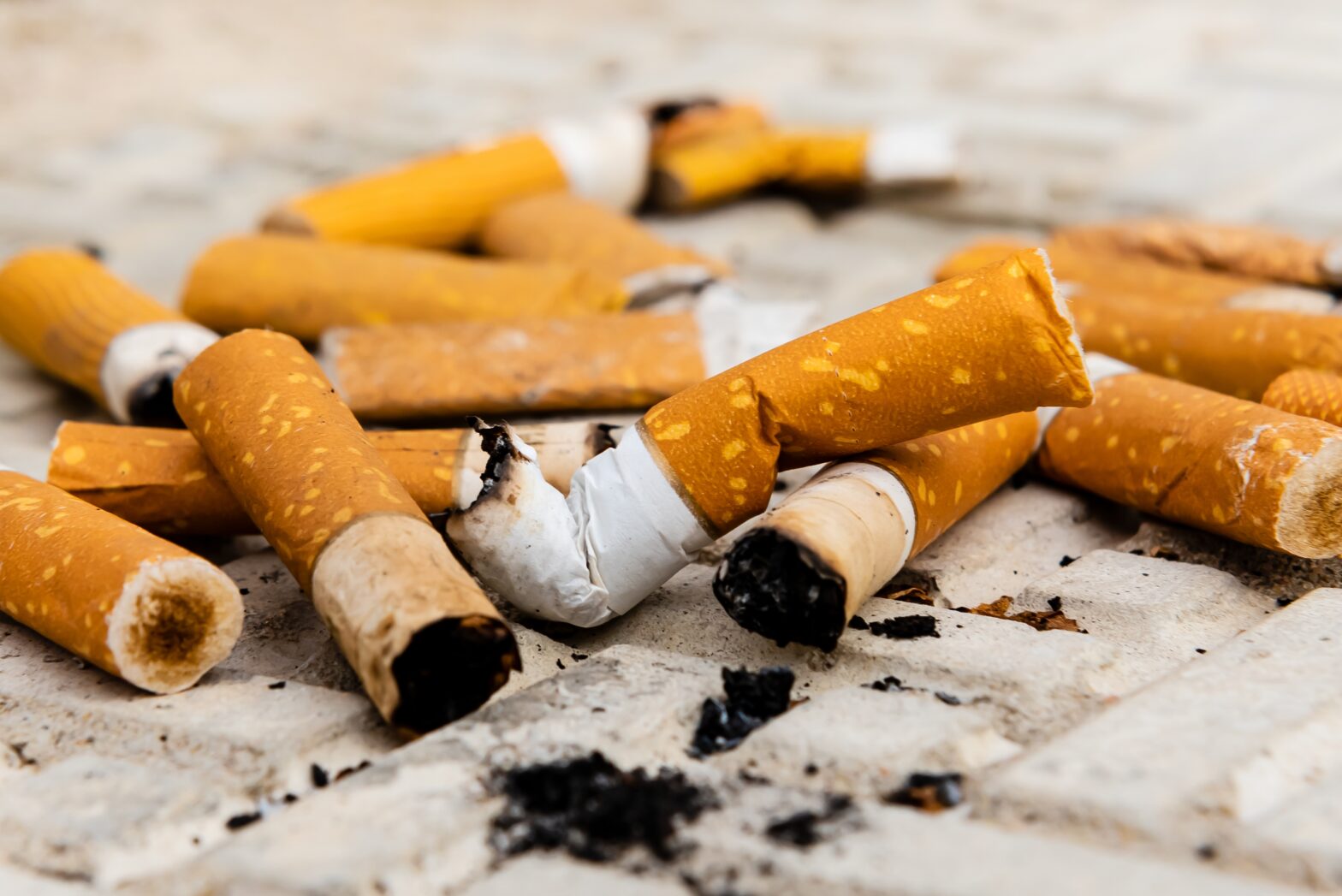Cigarette Butts: Toxic Plastic Pollution from Cradle to Grave
Cigarette butts are a persistent form of toxic plastic pollution. Littered in the environment they do not biodegrade. Instead, they slowly leak a chemical cocktail of highly toxic and carcinogenic substances into soils, waterways, lakes, and the oceans. In that way, the afterlife of cigarettes further adds to the havoc they already cause during their production and consumption.
No less than 16’400 cigarette butts, that is how many were collected during the last World Cleanup Day in Zürich co-organised by OceanCare in September 2022. Other clean-ups such as Net’Leman, in May of that year, amassed 54’621 of them. And, in a collective endeavour, schoolchildren in Switzerland and Liechtenstein in March 2021 picked up even 958’181 butts.
At about 310 mg per cigarette butt, just these three actions alone brought together 318 kg of highly toxic waste. Painstakingly retrieved from the environment by volunteers this obviously is but the tip of the iceberg. Beyond the aspect of chemical pollutants, cigarette filters are made of cellulose acetate and therefore also contribute significantly to plastic pollution. Given that one in four Swiss of 15 years or older smokes and cigarette butts are the most littered item in the country, the number of never-retrieved cigarette butts evidently is many times higher!
A chemical cocktail
It is not just the volume of the waste that is a problem. Tobacco product waste also contains over 7000 toxic chemicals, including known human carcinogens. Once in the environment, cigarette butts leak out an abundance of chemicals, at least 250 of which are known to be harmful and 69 are carcinogenic. When retained on land, they slowly degrade in the soil.
Through this way, the numerous toxins they contain are shown to be taken up by plants, thus potentially ending up in the food chain. Or, they are washed away to rivers and lakes, and eventually the ocean. Doing so, one cigarette butt contaminates up to 1000 litres of water. And while precise data may be lacking still, it is clear that many animals end up with cigarette butts in their guts.
How all these chemicals from cigarette butts interact with the countless quantity of other hazardous substances carelessly contaminating the global ecosystem of our planet, we do not know. Yet, that cigarette butts add to the chemical cocktail affecting humans and the environment is beyond doubt. Unquestionably, microplastics are among the substances they release, with one source estimating that every smoked cigarette filter contains 15,000 strands of microplastic fibres. Thus, cigarette butts are a major source of plastic pollution.
Cigarettes: harmful from cradle to grave
Evidently, the chemical and microplastic pollution by cigarette butts does not stand on its own. It is the final act of a product which is harmful all along its lifecycle. The toxic legacy of littered cigarette butts just adds to the long list of devastation already caused by cigarettes. According to a report from the World Health Organisation, every year the tobacco industry costs the world more than 8 million human lives, 600 million trees, 200 000 hectares of land, 22 billion tonnes of water and 84 million tonnes of CO2.
Big tobacco: a problematic industry
The tobacco industry still, largely, refutes everything. Infamously, already 30 years ago, the industry claimed that “I believe nicotine is not addictive”. Today that same the industry assures that “there is no evidence that cigarette butts end up as microplastics”, despite all evidence to the contrary. It is high time that the industry finally takes responsibility and accountability for their products, according to the polluter pays principle.
The situation in Switzerland
According to the Federal Council, the harmful effects of littered cigarette butts to the environment have not been adequately documented. Therefore, it considers a ban on disposable cigarette filters to be a disproportionate interference with the freedom of trade and business. Indeed, also in Switzerland, trade and business still seem to have more weight than the protection of people and environment. This must change.
A simple solution: stop littering
Globally, cigarette butts are by far the largest single type of litter by count. Since the 1980s cigarette butts have consistently comprised 30–40% of all items picked up in annual international coastal and urban clean-ups. Also in Switzerland cigarette butts are the most littered item. Flicking a cigarette butt on the ground also seems socially accepted. As such, it is a behavioural problem, that needs urgent changing. Cigarette butts go into the garbage, never on the ground or into nature.
Yet, it is not just an issue of the end-consumer alone. Also the tabaco industry has to acknowledge its share in solving the issue, and take their responsibility for the waste produced by their products. Therefore, they need to develop and roll-out genuine tack-back systems, and fully accept extended producer responsibility along the whole life cycle of cigarettes.
